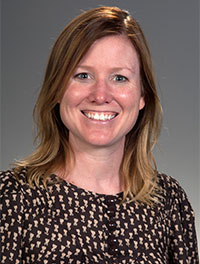The 2023-2024 academic year is upon us and as health professions educators, we are hard at work preparing for our next batch of enthusiastic learners. Whether they be first years, second years, or clinical trainees, each stage of health professions education presents new opportunities for professional growth and development that can be both exciting and daunting. After many have enjoyed a break in their studies for mental refresh, they return hopeful for an engaging, rewarding, perhaps even transformative learning experience. How can we leverage, and dare we say sustain, this motivation and energy to support our active learning strategies throughout the academic year?
It is at this time that I like to remind myself of the recipe for active learning success—learner engagement (jump to recipe below). In her book Student Engagement Techniques: A Handbook for College Faculty, Elizabeth F. Barkley defines learner engagement as “a process and a product that is experienced on a continuum and results from the synergistic interaction between motivation and active learning” (pg 8). Therefore, to foster learner engagement, we must learn from research and theory what motivates our learners so that we may refuel their motivation with each new learning experience. We must also practice evidence-based teaching so that we may choose active learning methods that work for the outcome we are trying to achieve as well as synergize with our learners’ motivation. Below is Barkley’s recipe for successfully engaging your learners each and every time.
Learner Engagement Recipe:
You Will Need:
- Learner motivation
- Active learning method
- Appropriate classroom conditions
Directions:
1. Motivate Your Learners: In their 2016 review of five contemporary theories regarding motivation to learn, Cook and Artino Jr. define motivation as “the process whereby goal-directed activities are instigated and sustained.” They identify four common learner characteristics across all five theories that contribute to low learner motivation:
- Low Self-Efficacy – ‘I won’t be successful in accomplishing _____.’
- Fixed Mindset – ‘If I don’t try _____, I won’t make an embarrassing mistake.’
- Maladaptive Attributions – ‘I failed the last time I tried _____ because of (my effort/innate ability/peers/teacher/luck) and don’t want to do it again.’
- External Motivations – ‘I am not the (type of learner) that will be successful in this learning environment.’
To motivate your learners or to improve the motivation of only those demonstrating specific motivational characteristics as described above, educators may consider modifying their instructional strategy using one or more of the practical applications of motivation theory summarized by Cook and Artino Jr. in their supplementary table.
2. Choose an appropriate active learning method: There are a myriad of teaching and learning strategies that fall under the umbrella term of active learning. Elizabeth Barkley summarizes many in her book, but there are abundant additional resources for discovering new strategies. These include Mari Hopper’s article Alphabet Soup of Active Learning: Comparison of PBL, CBL, and TBL; Demian Hommel’s article Aspiring to Create Learning Experiences Students Remember and the International Association of Medical Science Educators How-to Guide for Active Learning. They range from simple tactics that require less coordination to complex strategies that can be used by individual faculty to engage learners in a flipped classroom.
- Simple Active Learning Tactics (e.g., class polling, concept mapping, station-based activities, think-pair-share, debate, reflection)
- Complex Active Learning Strategies (e.g., case-based learning, problem-based learning, team-based learning, peer instruction)
3. Establish classroom conditions that promote synergy between motivation and active learning: Building off the work of Elizabeth Barkley, Rands and Gansemer-Topf describe how the learning environment can be improved to optimize learner engagement. They suggest:
- Building community with an open classroom design that allows for social interaction among students and with the instructor.
- Appropriately challenging learners by leveraging assessment and audiovisual tools that facilitate frequent creation, sharing, and assessment of student understanding.
- Employing diverse teaching methods to engage both the mind (e.g., different modes of content delivery) and body (e.g., moving around the classroom).
What strategies have you employed to enhance learner motivation and engagement in your active learning sessions? Comment below or share your recipe via Twitter at #MedEdPearls!
#MedEdPearls are developed monthly by the Health Professions Educator Developers on Educational Affairs. Previously, #MedEdPearls explored topics including delivering an integrated curriculum, designing motivating learning experiences, and applying principles of trauma-informed care to teaching.

Leah Sheridan, PhD, is a medical educator in physiology. Leah currently holds a position of Professor of Instruction at Ohio University Heritage College of Osteopathic Medicine where she serves in curriculum innovation, development and leadership. Leah’s areas of professional interest include the scholarship of teaching and learning, physiology education, and curriculum development. Leah can be reached via email.
#MedEdPearls

Jean Bailey, PhD – Virginia Commonwealth University School of Medicine
Rachel Moquin, EdD, MA – Washington University School of Medicine

